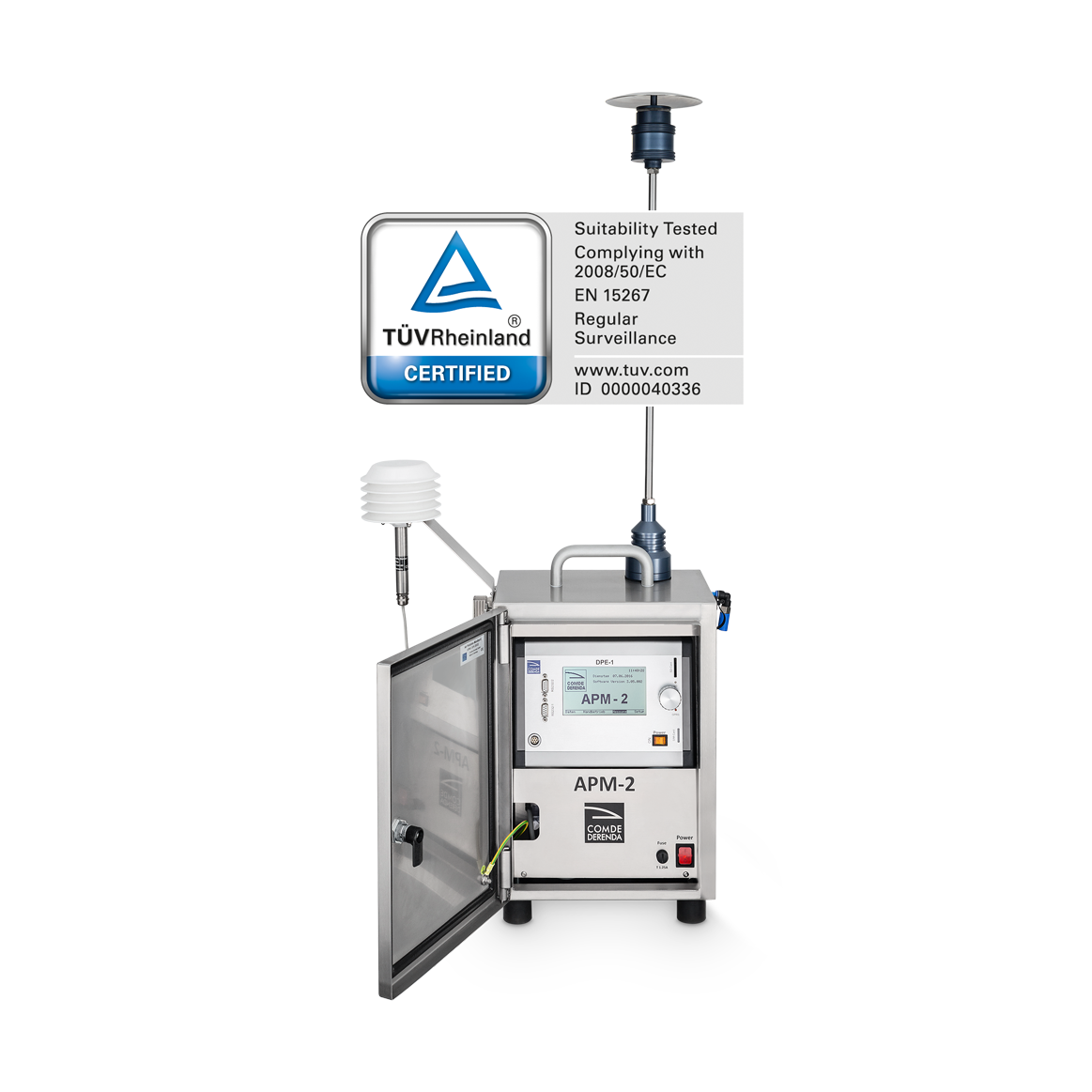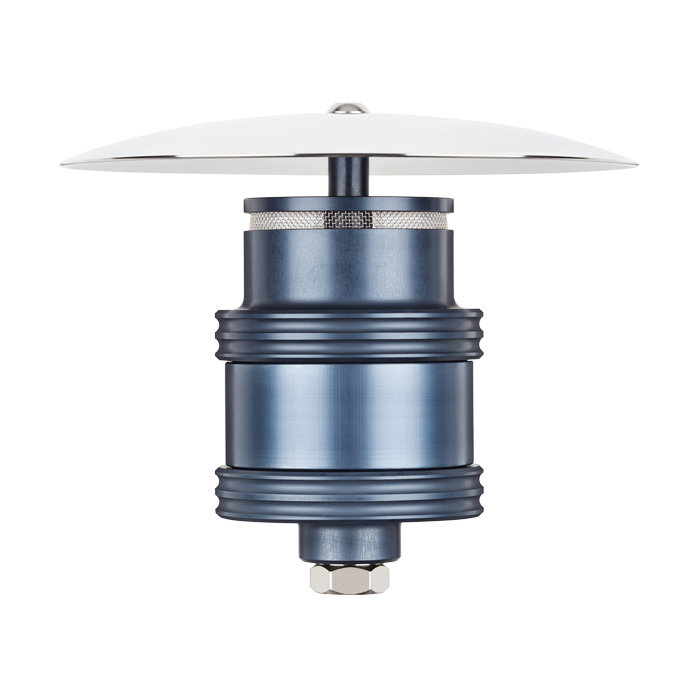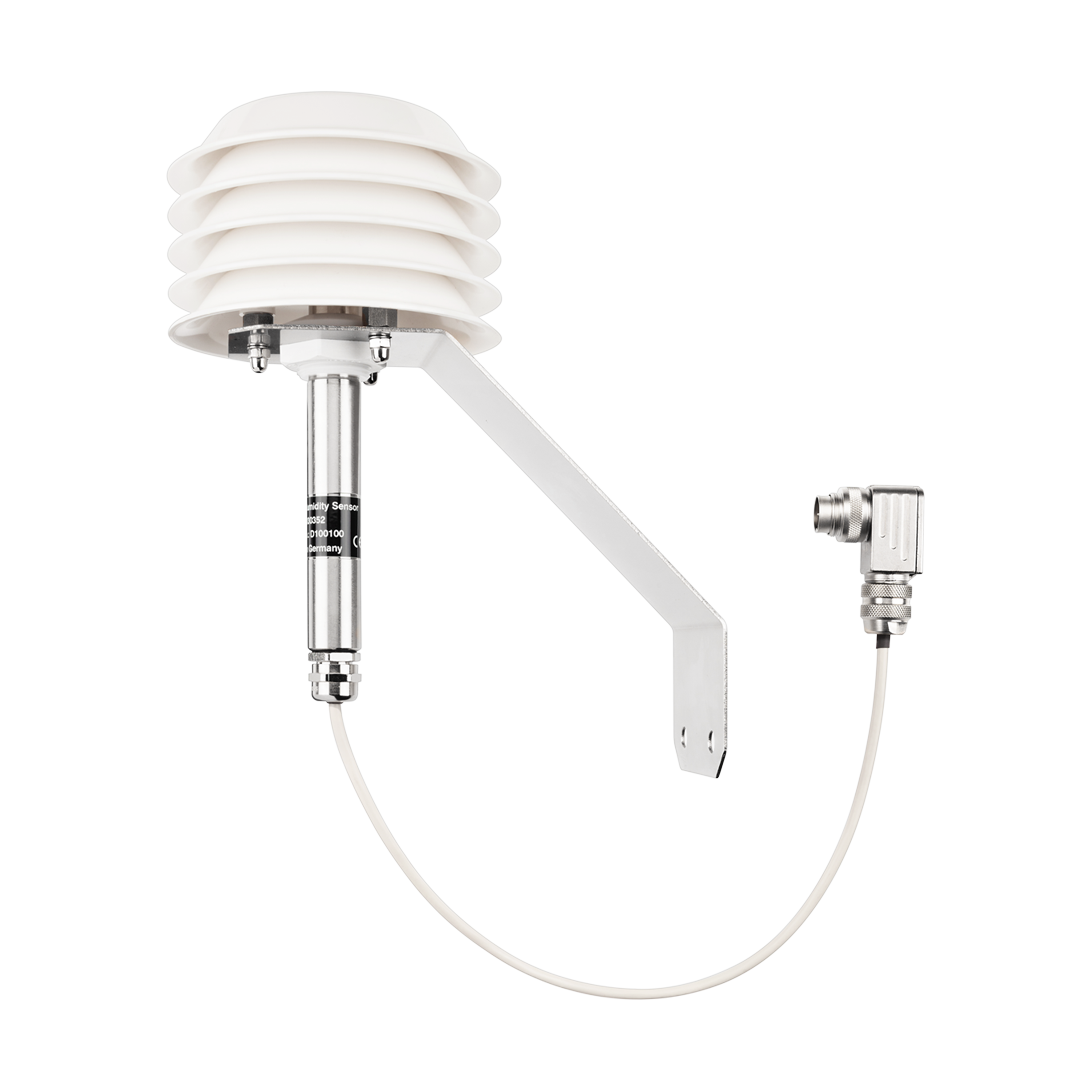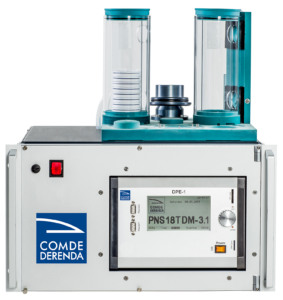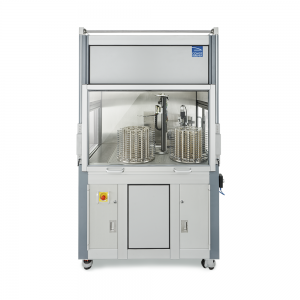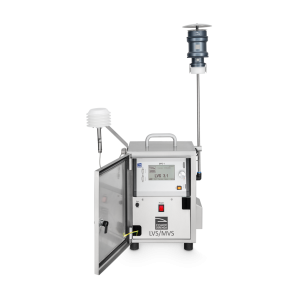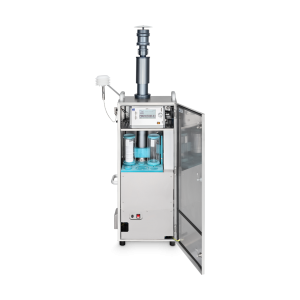Design
The APM-2 consists of the following principal components:
- Stainless steel cabinet
- Control unit with SD card reader
- Vacuum pump
- Intake tube
- Impactor inlet
- Virtual impactor
- Dispersion photometer
- Temperature and humidity sensors
- GPRS modem
In order to protect the photometer signal against the effects of temperature, the photometer is installed in a thermally insulated, temperature-controlled housing.
Operating principle
Before measuring begins, the desired parameters (e.g. the particulate matter fraction that is to be measured) are entered in the control unit. During operation the device draws in ambient air through a PM10 impactor inlet at a volumetric flow rate of 3.3 l/min. The design of the impactor inlet corresponds to that of the Comde-Derenda PM10 inlet that has been certified to EN 12341:2014; its separation characteristics have been verified by the Institute of Energy and Environmental Technology (IUTA). In the downstream virtual impactor, the aspirated air is separated into an auxiliary (enrichment) stream and a primary (normal) stream. A switching device (peristaltic valve) then diverts one of these two streams to the dispersion photometer. In the photometer the aerosol is illuminated by a laser. The light dispersed by the particles is captured by a photodetector and converted into an amplified output signal. This output signal is a direct measure of the airborne particulate matter concentration. The photometer measures the PM10 concentration in the enrichment mode and the PM2.5 concentration in the normal mode. For zero point adjustment purposes, the photometer is periodically supplied with filtered air by way of the switching device.
The captured data are saved in the internal memory and on an SD card. They can also be periodically transferred to a network computer by way of the integrated GPRS modem.
TÜV qualification test
Our photometric method using scattered light has undergone qualification testing by TÜV Rheinland in compliance with the latest regulations governing the fractions PM10 and PM2.5 as per EN 12341:2014. The procedure has consequently been certified as equivalent to the customary gravimetric method, giving consideration to the requirements of the Guide to the Demonstration of Equivalence of Ambient Air Monitoring Methods. Previously determined correction factors/terms were applied during testing.
MCERTS certification
The APM-2 is also certified to comply with the MCERTS Performance Standards for Continuous Ambient Air Quality Monitoring Systems.
Details of the measuring method
A highly sensitive scattered light sensor lies at the heart of the applied measuring method. The light emitted by an intensity stabilized laser diode illuminates a measuring space defined by the optical path. The light scattered by all the aerosol particles inside this measuring space is captured by a semiconductor photodetector positioned at an angle of 90°. After amplification, the outcome of this measurement is made available as a voltage signal (0–5 V). The signal is directly proportional to the mass concentration of the aerosol in the measuring space (measuring range 0–1000 μg/m³).
The physical principles governing light scattering determine that aerosol particles whose diameter approximately corresponds to the applied wavelength scatter the light most efficiently in relation to mass. In other words, they are the prevailing contributor to the photometer output signal. The wavelength of 650 nm applied by the device is most sensitive to particles in the size range from 0.5 to 1 μm. For this reason the output signal of a dispersion photodetector deployed outdoors is dominated by the PM2.5 fraction. Simple dispersion photometry is thus subject to limitations for the measurement of the PM10 concentration because the complementary coarse fraction PM2.5 to PM10 contributes substantially less to the output signal in relation to mass and is therefore under-represented in the measurement.
The measuring instrument has to compensate for this sensitivity deficit relating to the coarse fraction PM2.5 to PM10. The APM-2 compensates by way of the virtual impactor situated upstream of the photometer, which selectively enriches the concentration of the coarse fraction. This enrichment effectively increases the sensitivity of the photometric equipment for the particle size range PM2.5 to PM10.
The information on this website represents the state of knowledge at the time of writing. Technical specifications are subject to modifications. Comde-Derenda GmbH accepts no liability whatsoever for the content provided or for damages resulting from the use of its products.

